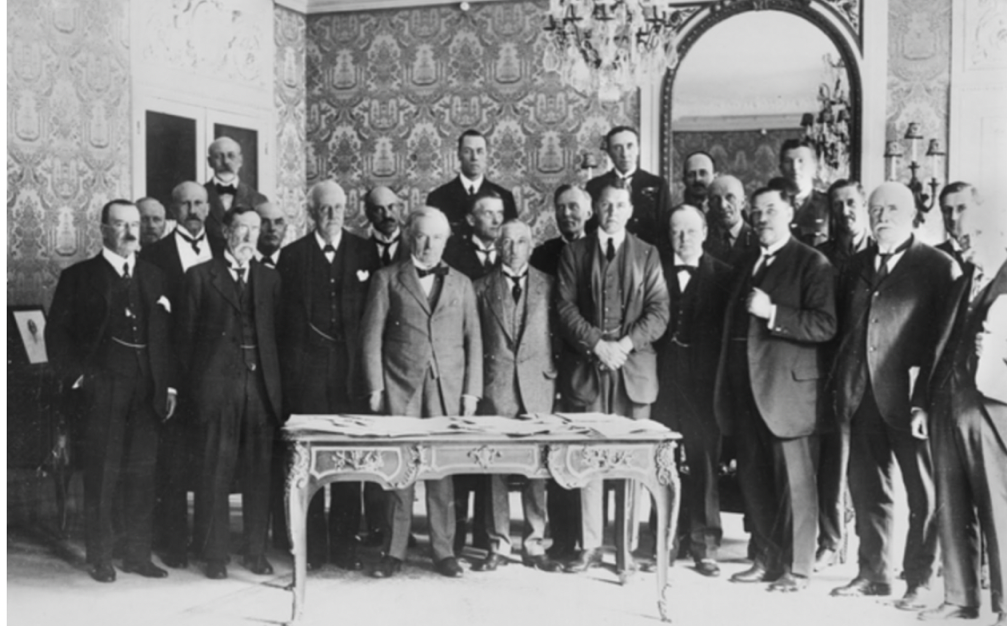The formation of the SDP marked the culmination of a long campaign by a small group of Labour MPs, who had been working towards a realignment of the left, in order to counteract the increasing militancy of the Labour Party and produce a credible alternative to Thatcherism.
The concept had first been promoted by Jenkins as part of the Dimbleby lecture he gave in November 1979, when he spoke of the need for a new centre party which would promote radical social and constitutional reform and appeal to those people that felt alienated from the antagonistic two-party system. Jenkins and a number of his Labour colleagues were becoming increasingly disturbed at the way their party was lurching increasingly towards the left. The disgruntled group finally decided to abandon Labour in January 1981, following the party’s annual conference at Wembley, where delegates had adopted an electoral college system, which gave the trade unions disproportionate power in selecting the party leader.
On the 25th January, the so-called Gang of Four, consisting of
Roy Jenkins,
Shirley Williams, David Owen and
Bill Rodgers, gathered at Owen’s Limehouse flat and issued a statement launching the Council for Social Democracy. The rebels declared that they were forming the organisation in order to bring like-minded people together to reinvigorate parliamentary democracy and offer a credible alternative to the dogmatism of the Labour Party, which was increasingly giving Mrs Thatcher a free reign on Downing Street. Nine other Labour MPs pledged their support for the four and the Liberal leader, David Steel welcomed the creation of the new group as an opportunity to break the mould of the failed political system. He spoke of the desire to produce a realignment of the progressive and hopeful forces in Great Britain, as opinion polls began to show public endorsement for an alliance between the Liberals and the newly formed group.
Nevertheless, Crewe and King (
SDP: the birth, life and death of the Social Democratic Party, 1995) claim that Steel became increasingly impatient at the slow progress the Gang of Four were making in forming a permanent political group that his party could co-operate with. Furthermore, the members of the Council for Social Democracy attracted some criticism because they failed to resign from the Labour Party immediately.
However, the group did eventually detach themselves from their traditional political roots and other Labour MPs soon emerged to publicly announce their support for the organisation. They were followed by the Norfolk North Conservative MP, Chris Brocklebank-Fowler, who publicly castigated Margaret Thatcher before joining the growing campaign on the 16th March.
Ten days later, the new Social Democratic Party (SDP) was finally launched simultaneously in nine different cities across the country, with a 9 o’clock press conference starting the proceedings in London’s Connaught Rooms. The party’s image was characterised by a special red, white and blue logo that was designed to reflect the party’s modern and nation-wide appeal and the Gang of Four emphasised the collective way in which they would lead the organisation.
They spoke of the need to reform the bureaucratic nature of the welfare state and decentralise the decision making process in order to empower people at a local level. The founders of the party also argued that society as a whole should benefit more from the operation of the free market and emphasised the damaging impact that the adversarial political system had on the economy. In foreign affairs, the party favoured an internationalist approach, endorsing active involvement in bodies such as the EEC and NATO.
With leading political figures and former cabinet ministers amongst the new party’s 14 MPs, the launch created a great deal of excitement and by the end of 1981, the SDP boasted a membership of 65,000.
After forming an electoral Alliance with the Liberal Party in June of that year, the SDP continued to evolve. Roy Jenkins narrowly failed to take the Warrington seat from Labour during a by-election that July before Shirley Williams achieved an impressive triumph in Crosby, becoming the first elected MP for the SDP in October.
Despite an impressive result at the 1983 General Election, the Alliance performed badly in the 1987 contest and the SDP failed to gain a single seat. Realising that the successful days of the Alliance were over, the two parties took the final decision to merge and the SDP finally ceased to exist in March 1988, when the merger negotiations were finally completed.
Although John Stevenson (
Third Party Politics Since 1945: Liberals, Alliance and Liberal Democrats, 1993) has described the Gang of Four as the most important group of breakaway MPs since the war, Peter Joyce (*
Towards the sound of gunfire: a history of the Liberal Democrats, 1997) has questioned the effectiveness of the SDP as a political party. Joyce claims that the disparate views of the SDP’s leading proponents meant that the party lacked a sense of coherency. He also argues that the SDP failed to attract many of the social democrats that it was supposed to appeal to, including those on the right wing of the Labour Party, such as Roy Hattersley. Joyce also argues that the SDP became increasingly redundant as a separate political force, once the Labour Party began to moderate its views after 1983. In addition, he points to the fact that the party failed to make a concerted attempt to attract support from more moderate Tories.
Nevertheless, the formation of the SDP did mark a significant turning point in the path of British politics. It sparked the creation of a new centre left movement that would offer a clear alternative to Thatcher’s market driven philosophy and Labour’s dogmatic socialist theories and would also compel each of the three main parties to re-examine their place within the political system.
Related time periods
Related timeline events

